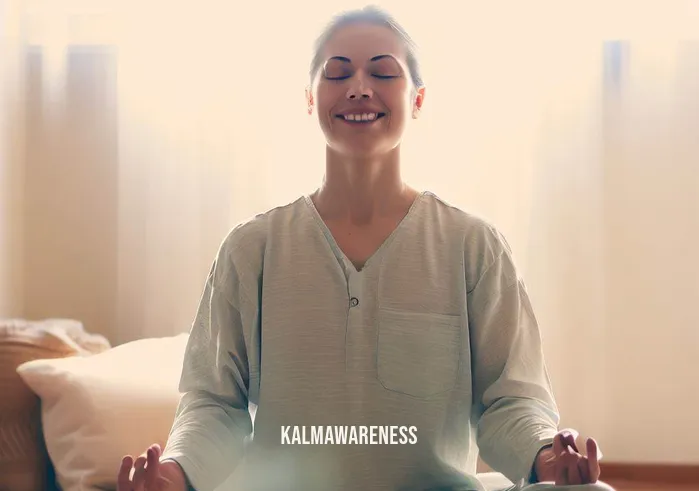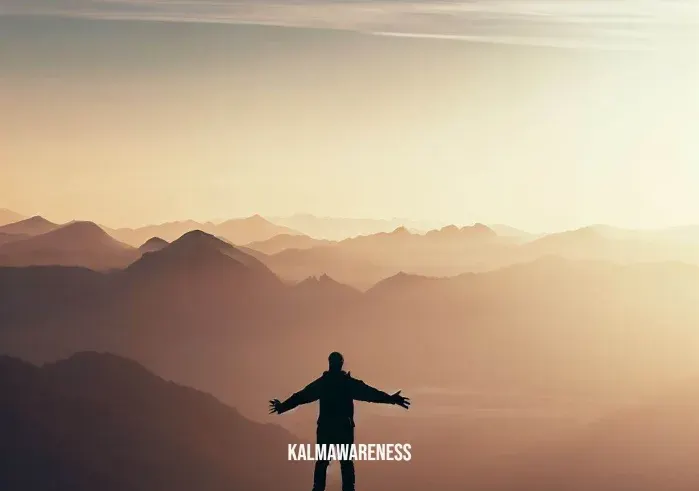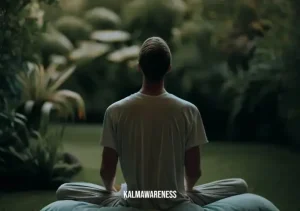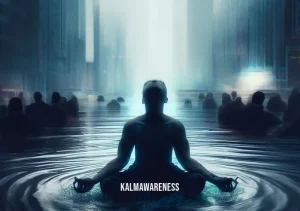How Should You Feel After Meditation: A Deep Dive Into Mindfulness and its Effects on Well-being
Meditation is an age-old practice that has gained immense popularity in recent years. More and more people are turning to meditation for solace, mental clarity, and emotional well-being. But, with so many resources available, there’s a burning question on the minds of many: How should you feel after meditation?
Understanding Meditation
Meditation, at its core, is a practice that involves focusing the mind, eliminating external distractions, and producing a state of deep peace. There are different types of meditation techniques, each with its unique benefits. For instance, some might focus on breathing techniques, while others may involve movement, such as those inspired by movement books for preschoolers.
The Emotional Afterglow
“Meditation is the journey from movement to stillness, from sound to silence.”
After a meditation session, it’s common to feel a sense of calm and relaxation. This emotional afterglow can be likened to the feeling after a good workout or a restful sleep. The mind is clearer, and emotions are more balanced. You might feel detached from daily stresses or more connected to your inner self.
However, for some, especially beginners, meditation might stir up suppressed feelings or emotions. This is natural and is a sign that the meditation is working on deeper psychological levels. As with any practice, it’s essential to approach it with an open heart and mind.
While there are many resources available to guide one’s meditation journey, including a detailed documentary on meditation, it’s crucial to understand that everyone’s experience is unique.
Meditation and Career Growth
A surprising but genuine facet of meditation is its influence on one’s career. In today’s high-paced world, professionals from all fields are seeking ways to manage stress, improve focus, and enhance their productivity. Here’s where meditation enters the scene.
Studies have shown that meditation improves cognitive functions, making tasks like teaching with compassion and intentional thinking more effective. With improved focus and clarity, making critical decisions, understanding complex concepts (even ones like the easiest classes at Berkeley), or being present in essential meetings becomes more accessible.
Moreover, there’s an undeniable link between mindfulness and salary. As meditation improves one’s productivity and emotional intelligence, it indirectly paves the way for career advancements and, therefore, an increase in income potential.
Meditation in Education
Meditation has also found its way into the education sector. More schools and educators are integrating mindfulness practices into their curriculum. They’re not just teaching academic subjects but also promoting emotional well-being and life skills. Resources such as the works of Tish Jennings showcase the profound impact of these practices on students’ lives.
Educators are becoming more aware of the importance of emotional intelligence in students. Phrases from the conscious discipline approach emphasize the need to cultivate these skills from a young age. With the increasing challenges that today’s youth face, meditation provides a tool for them to cope, understand their emotions, and lead a balanced life.
For a closer look, the teenage brain and its complexities are a testament to the need for mindfulness practices during these crucial developmental years.
In conclusion, how one should feel after meditation varies. While most experience calm and clarity, it’s essential to approach meditation without rigid expectations. The journey is personal and ever-evolving.
We invite you to continue to the next part of this article, where we’ll delve deeper into the meditation industry, its growth, and how leading figures are making a difference.
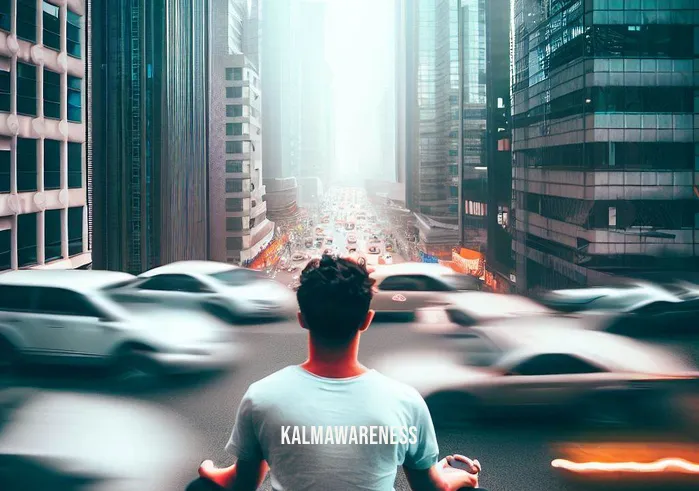
The Evolution of Meditation and its Impact on Society
In the world of mindfulness and meditation, the journey of self-exploration often delves into broader horizons beyond personal tranquility. As we further delve into “how should you feel after meditation,” it’s paramount to understand its wider ramifications on societal health, both mentally and economically. Here’s how the meditation industry has been blossoming, and the diverse ways it’s impacting our lives.
A. Meditation’s Growth in Popularity
Historical Roots to Modern Practices
Meditation, while rooted in ancient practices, has seen a modern resurgence. The techniques that were once the domain of spiritual leaders have found their way into mainstream society. This expansion is partly because of the various mindfulness programs and courses that have emerged, catering to a wide demographic.
Digital Age Influence
Technology has significantly boosted meditation’s reach. Digital platforms, YouTube channels like Kindness 101 videos, and smartphone apps have made mindfulness practices accessible to everyone, everywhere.
Integration in Workplaces
With a better understanding of employee well-being’s importance, many corporations have started implementing meditation sessions. It’s not just about physical health anymore; mental well-being has become a top priority.
Endorsement by Prominent Figures
Recognized personalities from various fields, such as Ali Smith from the Holistic Life Foundation, have been vocal advocates for meditation. Their endorsements have brought legitimacy and wide-scale acceptance to the practice.
B. Economic Implications of the Meditation Industry
As meditation’s popularity has surged, so has its economic footprint. Here’s a snapshot of how the meditation industry is making waves in the economy:
| Economic Aspect | Description | Real-World Example |
|---|---|---|
| Industry Worth | The meditation industry, in terms of apps, courses, retreats, and merchandise, is booming. | The surge in popularity of apps and platforms focused on mindfulness. |
| Employment Opportunities | New career avenues, be it as a meditation instructor, app developer, or retreat organizer, have emerged. | The rise in demand for Medit scanner training. |
| Tourism Boost | Meditation retreats, especially in serene destinations, have become a sought-after vacation choice. | Tourist influx in areas known for their meditation retreats. |
| Educational Programs | Institutes offer dedicated courses, degrees, and certifications in mindfulness and meditation. | Emergence of programs like the Master’s Degree in Mindfulness. |
| Tech Innovations | Technology has played a pivotal role in bringing meditation to the masses. | Growth of platforms and apps focused on meditation practices. |
C. What Does This Mean for the Average Individual?
The societal implications of the meditation industry’s growth touch everyone, even if they aren’t directly involved in meditation. From the way businesses operate, with an increased emphasis on mental well-being, to the new economic opportunities that arise, meditation’s influence is undeniable.
For someone pondering “how should you feel after meditation,” the answer is multifaceted. While there’s the undeniable personal tranquility and clarity, there’s also the broader understanding of being part of a global movement promoting mental health, societal well-being, and economic growth.
In conclusion, meditation isn’t just a solitary journey. Its ripples affect our society in more ways than one might initially perceive. It’s a holistic approach to personal and societal growth, and its momentum doesn’t seem to be slowing down anytime soon.
We invite you to continue to the next part of this article, where we’ll explore more about the pioneers in the meditation world, their contributions, and how meditation techniques are continuously evolving.
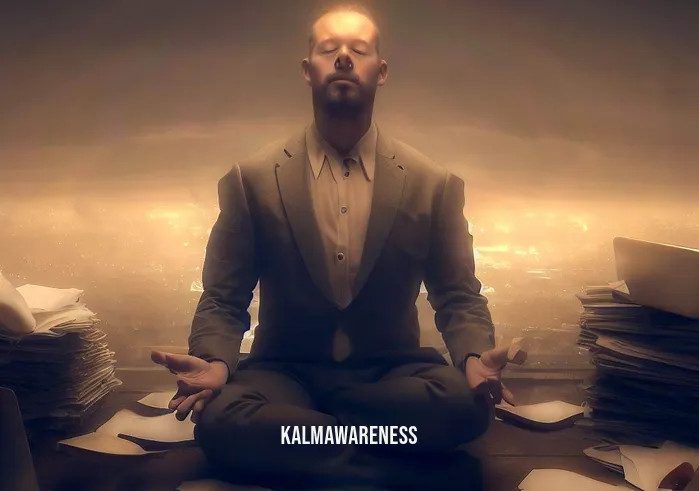
Pioneers and Philosophies: The Beacon Lights of Meditation
Meditation, a practice wrapped in tranquility and depth, has a history steeped in wisdom. Beyond just understanding “how should you feel after meditation,” it’s also essential to grasp the philosophies and pioneers that have championed the cause. They’ve not only spread the knowledge of meditation across the globe but have also enriched the practice with their profound insights. Let’s journey through their teachings and grasp the pearls of wisdom they offer.
The Guiding Luminaries
Michael Yellow Bird: An advocate for mindfulness, Michael’s work is a beautiful amalgamation of traditional mindfulness practices with modern societal needs. His teachings at the Michael Yellow Bird Mindfulness institute are testimonies to the impact of meditation on societal structures and individual growth.
“In the middle of every difficulty lies opportunity.” – Albert Einstein
This quote mirrors Michael’s philosophy, highlighting that meditation can turn challenges into opportunities for growth.
Tish Jennings: An educator and practitioner, Tish’s works, including her teachings at Tish Jennings, emphasize the marriage of mindfulness in educational systems.
“The only thing we have to fear is fear itself.” – Franklin D. Roosevelt
Channeling such wisdom, Tish emphasizes the importance of combating internal fears and anxieties through mindful practices.
Warstler Elementary: An unexpected pioneer, Warstler Elementary isn’t an individual but an institution that incorporated mindfulness for children, proving that age is no barrier to start the journey of introspection.
“Out of difficulties grow miracles.” – Jean de La Bruyère
Embracing challenges, the institution stands as a testament to how meditation can transform young minds, building a future filled with hope.
Philosophies that Echo Hope
While meditation does center around inner tranquility and self-awareness, its philosophies often reverberate messages of hope, resilience, and positivity. Here’s a look at some profound thoughts that inspire hope:
The Ripple Effect: Every drop in the water creates ripples, similarly, every meditation session has a ripple effect on our lives. This philosophy underscores that even a single moment of meditation can usher in change, much like the insight shared at Simple Human Heart.
“Hope is being able to see that there is light despite all of the darkness.” – Desmond Tutu
Meditation is that beacon of hope, a light in moments of darkness.
Meditation as a Lifeline: For many, meditation isn’t just a practice; it’s a lifeline. It’s the anchor that grounds them in turbulent times, offering solace and clarity. This ethos resonates with the beliefs propagated at Rise Up Society Videos.
“They say a person needs just three things to be truly happy in this world: someone to love, something to do, and something to hope for.” – Tom Bodett
Through meditation, many find that ‘something to hope for.’
The Journey Within: Often, the quest for answers leads one outside, but meditation emphasizes the journey within. It’s about understanding oneself, the feelings post-meditation, and drawing hope from inner strength.
“Hope lies in dreams, in imagination, and in the courage of those who dare to make dreams into reality.” – Jonas Salk
Meditation is that dream, a vision of a better self and a better world.
Concluding, the question of “how should you feel after meditation” might have countless answers. Still, the underlining sentiment remains the same – a feeling of hope, rejuvenation, and a deeper understanding of oneself. The pioneers of meditation, through their wisdom and practices, serve as guiding stars on this journey, illuminating the path for many.
We invite you to continue to the next part of this article, where we will explore the global spread of meditation and its assimilation into diverse cultures and traditions.

The Global Resonance: Meditation’s Universality
Meditation, once confined to Eastern spiritual practices, has now blossomed globally. Today, as we explore “how should you feel after meditation,” it’s crucial to understand its vast outreach. The practice has made its mark from schools to offices, documentaries to workshops. Each of these platforms unveils facets about the after-effects of meditation. The result? A global community bonded by a collective calmness.
Pedagogical Influence: The Classroom Connection
Movement Books for Preschoolers: Long before children comprehend complex words, they connect with stories. Movement books for preschoolers introduce them to the basic tenets of mindfulness and relaxation.
Teaching with Compassion: As educators mold young minds, their approach significantly impacts learners. A guide like Teaching with Compassion resonates the importance of meditation in building compassionate classrooms. It’s not just about how educators should feel post-meditation, but also how their mindful practices influence young minds.
The Teenage Brain: Adolescence, marked by whirlwind emotions, is a phase where meditation can be transformative. Resources on The Teenage Brain shed light on the teen psyche and the calming potential of regular meditation.
The Documented Lens: Meditation on Screen
Documentary on Meditation: Film is a potent tool to depict reality, influencing a broader audience. Documentary on Meditation offers a visual journey into the meditative world. Viewers don’t just understand the steps; they also get a glimpse of how one should feel after meditation.
Kindness 101 Videos: Kindness, a byproduct of mindfulness, gets its showcase in Kindness 101 Videos. These snippets don’t just preach; they inspire and infuse hope, resonating the post-meditative aura.
Diving Deeper: Specialized Focuses
IMTA’s Worth: International Mindfulness and Meditation Alliance (IMTA) has its perspectives on meditative practices. Exploring the question, Is IMTA worth it?, delves into the authenticity and value of guided meditation sessions.
Medit Scanner Training: For those keen on blending technology with mindfulness, Medit Scanner Training offers an intersection. The focus isn’t merely on meditative techniques but also gauging feelings post the session.
Pioneering Figures: Beyond Boundaries
Ali Smith – Holistic Life Foundation: Ali Smith’s initiatives via the Holistic Life Foundation highlight how meditation can transform communities. His narrative provides insights into the domino effect of meditation, from personal growth to societal change.
Intentional Teachers: A mindful educator doesn’t just follow the curriculum; they embed life lessons. Delving into what intentional teachers are constantly thinking about brings forth the meditation-inspired teaching ethos.
To sum it up, the feelings post-meditation aren’t just personal; they ripple across communities and cultures. Whether it’s through stories for toddlers, documentaries for adults, or specialized sessions for enthusiasts, the overarching sentiment remains the same: a blend of peace, hope, and rejuvenation. The universality of meditation underscores its potential to craft global stories centered around the essence of how one should feel after meditation.
Continue with us to the next part of this enlightening series where we’ll delve deeper into the various techniques of meditation and how they cater to diverse emotional and mental needs.
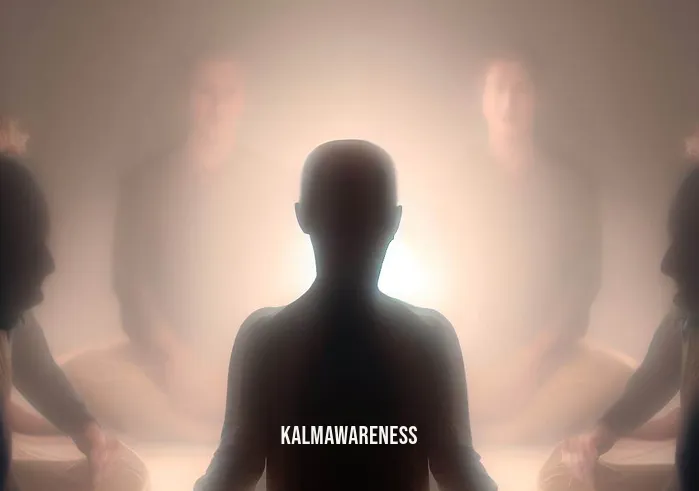
Meditation and Modern Life: The Hopeful Horizon
In our dynamic world, introspection often takes a backseat. Yet, the question, “how should you feel after meditation,” rings louder with each passing day. As the modern world grasps for moments of peace amidst chaos, meditation emerges as a beacon. In this final installment, we’ll explore how the essence of meditation aligns with modern-day needs, bringing in a horizon filled with hope and harmony.
Meditation in Modern Curriculum
Education isn’t just about academic achievements; it’s the holistic development of an individual. The role of mindfulness practices, like meditation, has gained prominence in shaping resilient young minds. Through resources like Warstler Elementary, one can observe the incorporation of mindfulness in the educational curriculum. As students navigate challenges, from adolescence to university life, their emotional wellbeing becomes paramount. And what better way to ensure this than introducing them to meditation?
Redefining Superpowers
Today, we’re surrounded by superheroes, both in fiction and reality. Yet, the unsung heroes are often those who foster life, nurture it. The tagline “I grow humans, what’s your superpower?” beautifully captures the essence of motherhood. As mothers juggle multiple roles, meditation becomes their armor, helping them manage stress, anxiety, and the plethora of emotions that accompany motherhood.
Advanced Studies in Mindfulness
While meditation was traditionally passed down through generations, today’s world sees a structured approach towards it. Courses like Master’s degree in Mindfulness are not just degrees; they’re a journey into self-awareness. These courses enable individuals to grasp the nuances of meditation, diving deep into the age-old question: how should you feel after meditation?
Embracing Simplicity Amidst Complexity
In a world inundated with information, the allure of simplicity is unparalleled. A dive into the Simple Human Heart offers a poignant reminder. At its core, meditation strips away the unnecessary layers, bringing us closer to our genuine self. It’s a journey from complexity to simplicity, from chaos to tranquility.
Bridging Cultures and Mindsets
Meditation, while rooted in ancient traditions, has the potential to bridge cultural gaps. Renowned figures, like Michael Yellow Bird and his take on mindfulness, showcase how diverse perspectives can converge through meditation, fostering global unity.
In conclusion, as we stand on the brink of a new dawn, the significance of meditation in our lives is irrefutable. Whether you’re an educator, a mother, a student, or someone seeking solace, the tranquility post-meditation is a universal experience. The feelings of serenity, hope, and connectedness underscore the transformative power of this practice.
As you navigate the vast expanse of meditation, always remember the horizon it promises: one of hope, peace, and infinite possibilities. We wish you a journey filled with profound introspection and boundless peace. And while this series on “how should you feel after meditation” concludes here, our exploration into the realms of mindfulness is perpetual. Dive deeper, explore more, and let meditation be your guiding light.
Thank you for embarking on this journey with us. While our meditation series culminates here, the ocean of knowledge at Kalmawareness is vast. We invite you to delve into our other articles, continuing your quest for awareness and enlightenment. Here’s to many more enlightening reads ahead!
